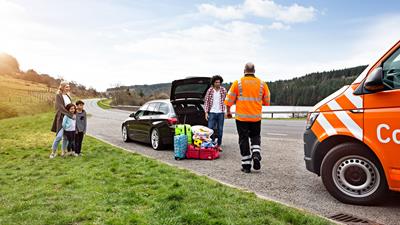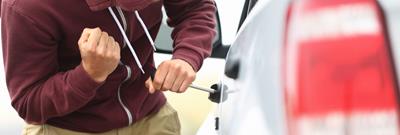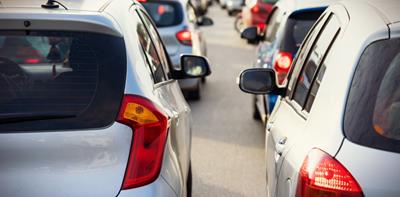
Breaking down while driving abroad can feel stressful, but it doesn’t have to ruin your holiday. Follow these steps to get your car back on the road safely.
EASY AS HACK
Make sure you have appropriate breakdown cover when driving abroad by checking your insurance policy documents. In most cases, breakdown cover is an optional add-on and could cover you when driving overseas. Alternatively you may be able to upgrade your standalone breakdown cover.
At a glance
- When driving in Europe, make sure you do your research first – many countries require you to have certain items in your car, such as your V5 handbook, driving licence, breakdown cover documents, warning triangle and reflective jacket in case of a breakdown.
- When calling for breakdown assistance, it’s handy to share your exact location (you may want to consider using an app like what3words), make and model of car and any information about the problem.
- Make sure you ask for and keep receipts for any breakdown services you receive as your breakdown company may ask for these receipts.
Steps to take if you have broken down abroad
Assess the situation
It can be easy to panic when your car breaks down, especially if you’re in a foreign country. That’s why your first step to getting back on the road is to take a few deep breaths.
Once you’re calm, you’ll need to assess the situation:
Is there any sign of smoke? If there is, exit your vehicle immediately and find a safe spot well away from the car.
Are you in a safe location? If you’ve stopped in the middle of a road, it might be best to push the car out of traffic, if it’s safe to do so, to avoid other drivers crashing into you or your vehicle.
Can you wait outside your car? It’s usually advised to move a safe distance from your car while you wait for breakdown services to arrive.
Have you alerted other road users? Turn on your hazards and, if it’s safe to do so, put a warning triangle out on the road to tell other motorists you’ve broken down. The guidance around warning triangles varies between countries so it’s worth reading the rules before you travel.
Travelling in summer? Beware of these 8 summer driving risks
Call for assistance
If you've broken down and you're in a safe space, call your breakdown provider. Most providers offer breakdown cover abroad, so you should be able to get help even if you’re in a different country if you’ve selected European cover.
If the car you’re driving is a hired car, it’s likely that the car hire company will have their own breakdown service. Give the hire company a ring and ask for their advice.
When you call for assistance, try to provide the following information:
- Your exact location
- The make and model of your car
- The symptoms of the problem
Ageas offers breakdown cover as an optional add-on to its car insurance policies.
Follow the instructions of the European breakdown cover provider
The breakdown assistance provider will give you instructions on what to do next. They may send a mechanic to your location to fix your car or refer you to a local garage.
If your car can’t be fixed on the side of the road, you will need to be taken to a garage close to where you’re staying. If you’re still a long way from your destination, it might be worth finding somewhere to stay overnight if the car can't be fixed on the same day.
Travelling with kids? Keep them entertained with these games for long car journeys.
How to prepare your car
There are different recommendations for what to do if your car breaks down abroad, depending on the country you are visiting. But the following should generally apply wherever you go.
- Move the car to a safe location. If possible, get your car off the road so it isn’t obstructing traffic. Be careful, especially of emergency exits and changing lanes, when moving your vehicle.
- Evacuate the car. It’s important to move away from the car after a breakdown, so make sure everyone exits the vehicle and doesn’t stand directly in front or behind it.
- Make sure you’re visible and safe. Put on a reflective vest and assist other passengers with theirs so everyone is visible on the road. Once out of the vehicle, stand away from the road too, preferably behind a barrier if there is one.
- Place your warning triangle on the road. As a warning to drivers, position the triangle on the ground about 30 metres behind the car. You should also wear a hi-vis jacket to ensure other drivers can see you.
- Alert other drivers of the accident. If your car is obstructing the road, walk about 150 metres down the road behind the barrier to alert drivers of oncoming danger.
- Call for help. Ring 112 on your mobile phone and describe your location. You can also use the orange boxes on the side of the road. Wait for help to come. It is also a good idea to save your breakdown company’s phone number in your phone.
Considerations when driving abroad
When driving in a different country, make sure you have any documents a garage might ask for, such as your driving licence, V5 handbook and breakdown cover documents. Also, give your breakdown cover document a good read-through before travelling internationally to make sure you have the cover you need.
Bear in mind that only minor repairs are completed at the roadside in Europe and recovery agents may not speak English. To prevent any problems from arising, it’s best to call your breakdown assistance service as soon as an incident occurs.
Why is breakdown cover important?
- Help is just a call away. Breakdown cover is useful to have in case your car breaks down, for example, if the battery runs flat or your tyre gets punctured. Depending on your level of breakdown cover, you will have access to a range of services such as 24/7 roadside assistance.
- Access to a range of features. If you have roadside assistance cover, you can get help with the repairing and towing of your vehicle. Other features of breakdown cover include local vehicle recovery, home assistance, onward travel, and more.
Driving abroad checklist
When travelling in Europe, these are the essential items you need to take with you in case of car trouble:
- Valid, full UK driving licence
- Vehicle V5C log book
- Proof of ID (passport)
- Proof of valid UK car insurance
- European breakdown cover policy details
- UK sticker (if you don’t have a UK identifier with the Union flag on your number plate)
How to stay safe in a breakdown situation
In a breakdown situation, it’s important to not panic and focus on making sure everyone is safe. Do the following to protect yourself and other passengers:
- Check for injures. Before doing anything, make sure everyone is injury-free and able to exit the vehicle. If someone is seriously injured and can’t get out of the car, call emergency services immediately.
- Put on high-visibility vests. When exiting the vehicle, you want to be as visible as possible to oncoming traffic, especially at night time. Make sure all passengers put on a reflective vest and swiftly exit the vehicle. Then, keeping your eye on the traffic, move to the side of the road out of harm’s way.
- Stand a distance away from the car. Make sure no one is standing directly in front or behind the vehicle, and if there is a safety barrier, move behind it.
- Use a warning triangle. Some countries require you to place a warning triangle on the road following an accident, if necessary, do so 30 metres behind your vehicle to warn oncoming traffic of the obstacle.
- Call your breakdown cover provider. Seek further assistance using a public phone box or mobile phone. If using your phone, it’s best to have the specific European number of your breakdown provider handy in case of emergencies. Don’t try to fix the car at the side of the road – leave it to the professionals.
- Take care of your basic needs. Roadside assistance may take a while to arrive at the scene, so it’s important to look after yourself when exposed to the elements. Remember to keep hydrated if it’s hot and put on an extra layer if it’s cold. It would be wise to keep water and warm clothing in your boot as a precautionary measure.
FAQs
What should I do if I’m in an accident abroad?
If you end up in a car accident abroad you should call the emergency services and contact your insurer as soon as you can, as you would in the UK.
Is breakdown cover a legal requirement abroad?
Breakdown cover isn't a legal requirement abroad, but it’s strongly recommended to have it.
Does my insurance cover you driving abroad?
All UK vehicle insurance policies include the minimum third-party cover to drive in the EU, including in Ireland, Andorra, Bosnia and Herzegovina, Iceland, Liechtenstein, Norway, Serbia and Switzerland.
However, third party insurance only covers legal liability to pay damages to someone else for injury to them, their passengers or their property. If your car is damaged or stolen, you'll have to pay for repairs or a replacement yourself, as well as any medical expenses if you're injured.
Some car insurance policies will provide comprehensive cover to drive in Europe and it is also possible to buy standalone temporary comprehensive insurance to cover driving in Europe.
What happens if you have an accident abroad without insurance?
If you have a car accident abroad without insurance you will need to pay for repairs yourself. If you have hired a car, get in touch with the hire company, as soon as it’s safe to do so.
Does car insurance apply abroad?
Car insurance laws apply when driving abroad. Third-party car insurance is a legal requirement, whether you’re taking your own car overseas or hiring a car.
Find out more about our car insurance.


